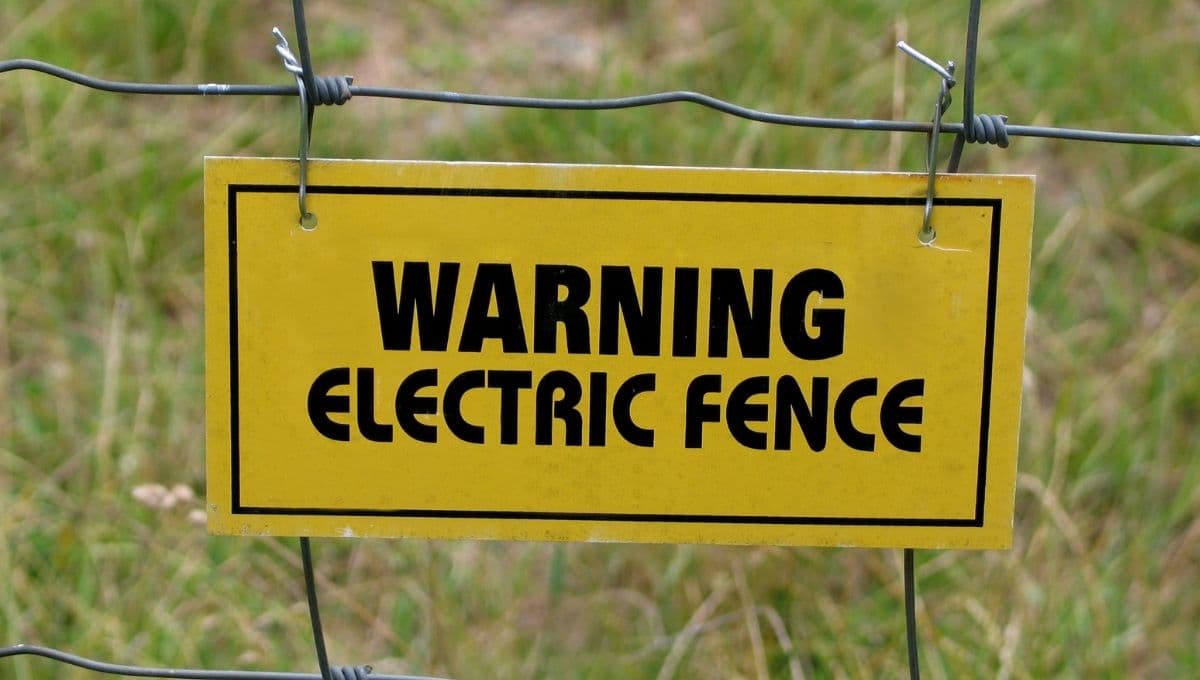Training Dog on Electric Fence: A How-To Guide
Dogs are curious animals that love to chase all sorts of moving things. Dogs love to chase small animals like squirrels or lizards. Some dogs are also fond of chasing bigger and more dangerous things like cars. They just can’t seem to stop themselves when the adrenaline kicks in and all caution is thrown to the wind.
A barrier around your home is the only way to keep your dog from running in front of traffic or getting lost after chasing small animals. But if you don’t have the time or resources to build a big fence around your home, invisible fences or electric fences are the ultimate solution.
Training dogs on electric fences will only take a short while. With these fences and proper training methods, your dog will stay safe and sound within your home boundaries even if they are left home alone.
When to Start Training a Puppy With an Invisible Fence
It’s important to start training your dog from an early age. Your puppy should be at least 8 weeks old when you start training with an e-fence.
Some experts feel it’s better to start training a dog from about 4 months old so you can reduce the risk of raising a dog that is scared to go outside. However, it’s possible to train older dogs to use an electric fence as long as you remember to take things slow and steady.
How Long Does It Take to Train a Dog on an Electric Fence?
The training time can depend on your dog’s age and personality. It will take a minimum of three weeks to properly train your dog.
You shouldn’t push your dog too hard with the training protocol because it might become afraid of your yard and will have a tough time playing or stepping out of the house. Start off slowly with a beginner training mode so your dog can learn the boundaries of your yard without getting scared.

Different Types Of Electric Fences
There are two main types of electric dog fences that you can use to keep your dog inside the yard. Here is a quick look at the most common types.
Wired Physical Fences
Traditional electric fences are created by placing a few wires around your yard. These electronic fences are connected to a power source and an electric circuit is connected to the fence. When an animal or object touches these physical fences, energy is released and they will feel a shock.
The shock intensity can be adjusted on these fences so you won’t hurt your pet but rather just scare it away. These fences are sometimes preferred because pets can easily see the wiring and they are ideal for keeping other animals or people off your property.
Invisible Fences
Invisible fence kits are very popular in fenceless areas like communal properties. These fences are buried under the ground along the perimeter of your dog’s boundary. Pets have to wear an e-collar with a receiver that receives signals from the pet fence.
When your dog gets close to the boundary, the collar will start to beep to warn the dog. If the dog gets too close to the wireless fence, he or she will feel a shock.
Training Dog on Electric Fence: Tips for Success
It’s very important to start training your dog to use the fence as soon as the electric fence kit is installed. The last thing you want is for your dog to experience pain unnecessarily, which can cause anxiety and discourage your dog from going outdoors.
Here are a few great tips to help you train your dog to use an invisible or electric fence.
Read Your Manual
It’s very important to understand how your device works and how to set it up correctly. Read the manual carefully and pay close attention to the levels of correction. Follow the correct installation steps and thoroughly test your setup before you start training your dog.
Place Training Flags
Good quality electric dog fences usually come with flags that will give your dog a visual indication of where the boundaries are. You should place your training flags all-around the boundary of where your dog can go.
The more training flags you can place the better, especially if you are training puppies. These boundary flags should be left in place until your dog is properly trained.
Fitting the Collar
Make sure that the collar is fully charged, then fit the collar firmly on your dog. The collar shouldn’t be too tight but it should still make contact with your dog’s skin. If the receiver doesn’t make contact with your dog’s skin, your dog will never learn to avoid the boundaries because it will never feel the shocks.
Choose Your Verbal Commands
All dogs need to be taught verbal commands so you can have good control over your pet while it is still training. Choose a set of commands that you can use to keep your dog close to home. Here is a quick look at a few easy examples.
- Come here
- Go back home
- Wait
- Slow down
Start With Just Signal Responses
Before you activate the shock function on the collar, you should teach your dog the warning beep. Set the collar to signal only and turn off the corrective stimulus. This way your dog can learn what those beeping sounds mean.
Train the Warning Signal
You should start off with leash training. Walk your dog with a leash in your yard, casually walking within the perimeter. Next, slowly move toward the perimeter. When you hear the collar’s warning signal, you should move back within the perimeter away from the fence line.
You can use verbal commands to call your dog back home and reinforce the signal the dog hears from the collar.
You can also reward your dog with treats for moving away from the fence line when the signal goes off. Positive reinforcement is very important if you don’t want your dog to become scared of your yard.
Keep repeating this exercise until your dog starts to move away from the fence by itself when the warning beep sounds. Offer lots of praise as you work.
Turn On the Correction
Once your dog is familiar with the signal or warning sound, you should turn on the correction. Ideally, you should start at the lowest level so your pet won’t get hurt or get scared.
Take a walk around your home again with your dog still on a leash. You can keep rewarding your dog for listening to the warning signal.
Start to walk closer to the boundary. If your dog ignores the warning signal and crosses the boundary, it will receive a corrective stimulus.
Find a Good Stimulus Level
Some dogs are a bit more thick-skinned than others, and they might not feel the corrective stimulus. If it crosses the boundary without seeming bothered by the shock, then you should increase the stimulus level.
Keep practicing and increasing the stimulus level until your dog starts paying attention to the corrective stimulus. Keep the corrective stimulus set at this level and continue practicing.
Teach Your Pet About Distractions
You can now start training off-leash. Your dog will gradually learn to pay attention to the boundaries and warning signals. Give your dog rewards and offer lots of praise every time it adheres to the warning signal by retreating from the boundary.
Next, you need to teach your dog to avoid temptations and distractions. Provide distractions that might encourage your dog to step over the boundaries. Throw a ball over the fence line and check to see if your dog follows.
If it’s too easy for your dog to ignore the corrective stimulus, then you might need to increase the stimulation level. The main idea is to keep your dog inside the boundaries despite any distractions it might encounter.
Accept That Mistakes Will Happen
Mistakes are going to happen while your dog is still practicing or learning. Take things very slowly when you notice signs of fear. You might even consider postponing your training until the next day if your dog gets scared.
Your dog will occasionally forget about the boundaries and might receive corrective stimulus. Keep rewarding your dog and keep practicing. Within no time at all, your dog will be trained to stay within the boundaries. With a few months of training, it might not even be necessary to use the fence anymore.
Training Dog on Electric Fence: Final Thoughts
Training your dog to use an invisible fence is going to take a lot of time and patience. If you do not have the needed time, or if you are impatient, then it might be better to get a professional canine expert experienced with training dog on electric fence.
We do hope this guide will help you during the training period so you can keep your beloved pet safe and sound. We also welcome you to have a look at some of our other guides. We offer lots of advice and tips to help train your dog properly.

